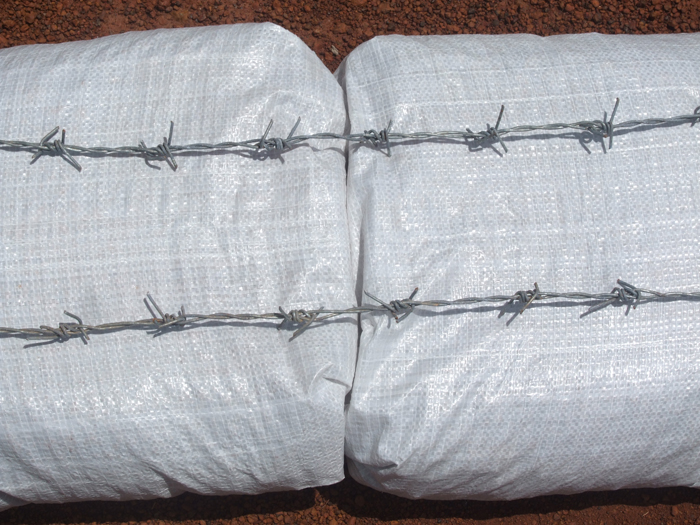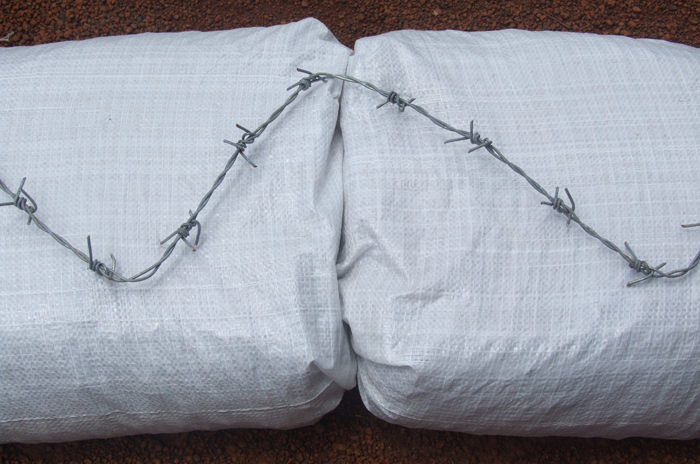Do not zigzag barbed wire between courses of bags, because this will lessen its tensile strength. A load (stress) on the structure, such as a hurricane, earthquake or differential settling, would tend to pull the structure apart as the slack is taken out of the wire. Zigzagging the barbed wire would provide more attachment points, which at first glance seems like a stronger solution, however, you would lose some of the tensile strength that way. The recommended practice is to place barbed wire in concentric rings on domes and roundhouses and in straight, parallel lines on rectilinear designs, usually two strands of 4-point barbed wire per course.



Just a thought on sustainability and using what nature provides couldn’t vines be used between courses? I know it wouldn’t have the strength of the barbed wire, but once the bags were tamped down with it sandwiched they would conform around the vines sort of like tongue and grooved blocks of cement.
My thinking was more for victims of disaster’s need to get a quick shelter together from whatever might be on hand. If viable it may make it easier to put up a structure somewhere that barbed wire may be difficult to obtain.
Any ideas on how to shape bags with a tongue facing up on each course that wouldn’t flatten out as the next course was compacted?
It depends on your situation. Barbed wire is recommended in most cases, because it’s far stronger and won’t deteriorate for at least 100 years. Locate free discarded barbed wire if you have to.
Extreme situations call for extreme solutions. There are situations where, in Africa, for instance, I could see using vines and other similar solutions.